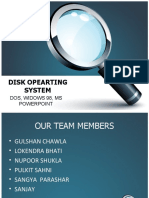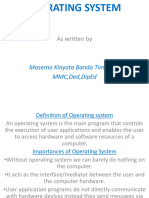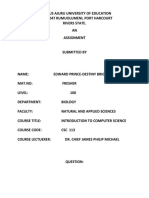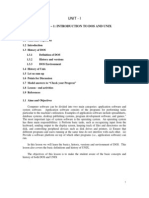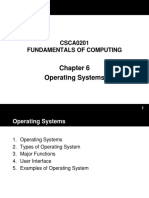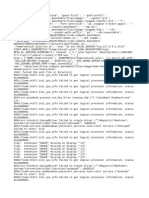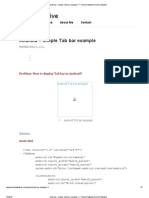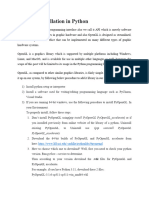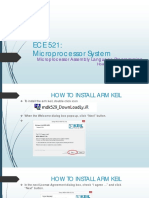0% found this document useful (0 votes)
97 views22 pages2-Computer System, Disk Operating System (DOS)
The document provides information about computer systems and operating systems. It discusses that a computer system includes hardware, software and operating systems. It describes different types of software like systems software and application software. Some key points are: systems software coordinates hardware and programs and includes operating systems; common operating systems mentioned are Windows, DOS, Unix and Linux; DOS is a command line interface while Windows uses a graphical user interface. It also discusses DOS commands like internal commands DIR, CLS etc and external commands like EDIT.
Uploaded by
Muhammad TalhaCopyright
© © All Rights Reserved
We take content rights seriously. If you suspect this is your content, claim it here.
Available Formats
Download as PPTX, PDF, TXT or read online on Scribd
0% found this document useful (0 votes)
97 views22 pages2-Computer System, Disk Operating System (DOS)
The document provides information about computer systems and operating systems. It discusses that a computer system includes hardware, software and operating systems. It describes different types of software like systems software and application software. Some key points are: systems software coordinates hardware and programs and includes operating systems; common operating systems mentioned are Windows, DOS, Unix and Linux; DOS is a command line interface while Windows uses a graphical user interface. It also discusses DOS commands like internal commands DIR, CLS etc and external commands like EDIT.
Uploaded by
Muhammad TalhaCopyright
© © All Rights Reserved
We take content rights seriously. If you suspect this is your content, claim it here.
Available Formats
Download as PPTX, PDF, TXT or read online on Scribd
/ 22

















